Lorenzo de’ Medici. Biography of the Magnificent and fun facts
Lorenzo de’ Medici is probably the most famous member of the Medici family ever, for a lot of good reasons. He was a fascinating personality, one of the most cultured men of his time, and the true driving force of the Renaissance in Florence. But he was also a man of power, the richest and most influential banker in Europe, who thanks to his economic power could manipulate the political fate of many nations. And of course those of Florence. Here is a short biography of Lorenzo de’ Medici, also known as The Magnificent, and some interesting facts to learn more about this historical figure.
For further information, read also:
Who was Lorenzo the Magnificent – Biography
Lorenzo de’ Medici was born in 1449 in Florence, son of Piero de’ Medici (known as the Gouty), but above all grandson of Cosimo the Elder. Since his father Piero proved unsuitable for power and in poor health from a young age, Cosimo personally educated his grandson Lorenzo to become his successor. Lorenzo learned to manage the family business, i.e. the most important bank of the time, and all the delicate political and economic relations that the Medici family had with the rest of Europe. But he was also educated in arts, sciences, literature and philosophy.
At 17 he married Clarice Orsini, coming from one of the oldest and most important Roman noble families. They had 4 daughters and two sons. The eldest son Piero (called the Unfortunate or the Vain) was destined to become the new leader of the family, but he had a much sadder fate. The second son Giovanni, on the other hand, had a brilliant future, in fact in 1513 he became Pope with the name of Leo X.
Lorenzo de’ Medici died in Florence in 1492, at the age of 43, in the Medici Villa of Careggi, due to gangrene in his foot, probably caused by gout. Gout was a very common hereditary disease in the Medici family, from which his father and grandfather had also suffered.
He is buried in the Old Sacristy, a private chapel of the Medici family in the church of San Lorenzo. Learn more about this place reading my article on the Medici Chapels and San Lorenzo church.
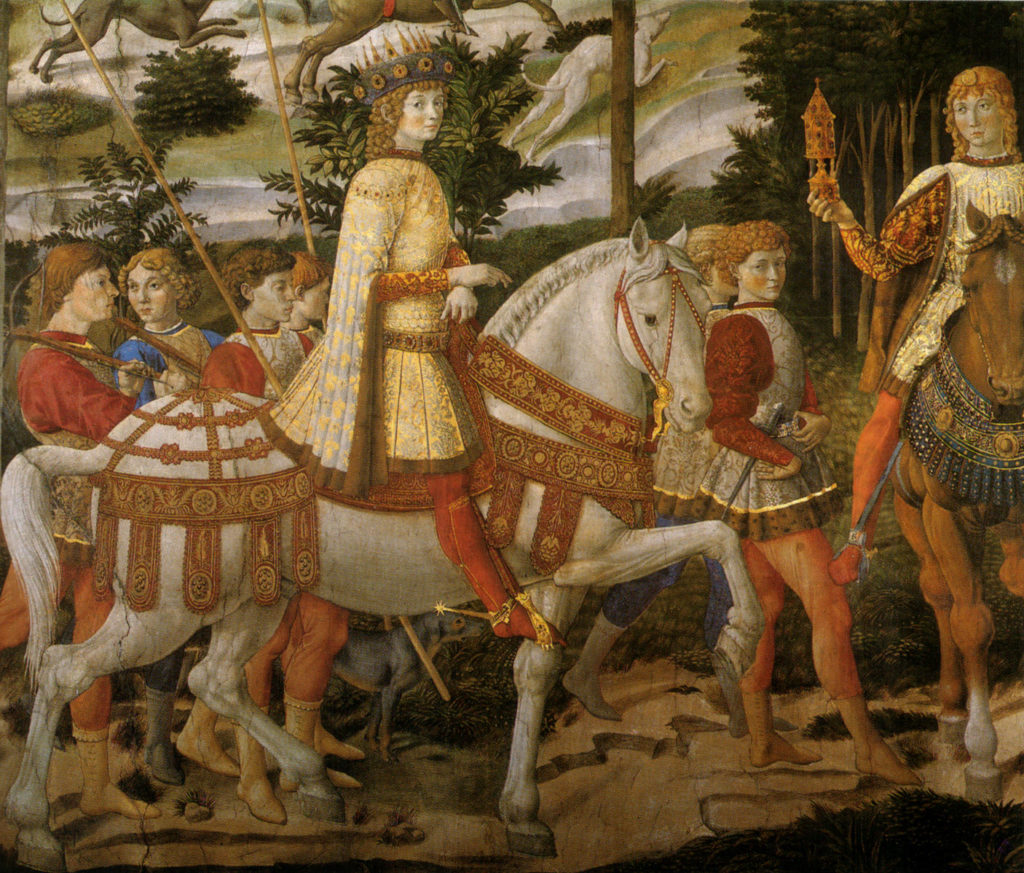
Why was Lorenzo de’ Medici so important?
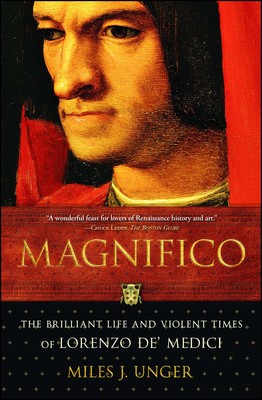
Lorenzo was officially only a banker and not a politician. But economic power is also political power, and today he is considered the balance of power in Europe. It is easy to imagine what political influence he could have, being the banker of the Pope, of the King of France and many other European sovereigns.
Of course he was also the puppet master of Florence’s politics. Always working behind the scenes, and never engaging in politics personally. But politics was made by his most faithful allies, by the families to which the Medici were related, by the customers of his bank. At the time the Medici were not yet the lords of Florence, which was instead governed by a Republic, made up of political parties, councils, votes and elections, almost like today.
But the reasons why Lorenzo the Magnificient was so important are not only economic and political, but also and above all cultural. He was the true engine of the artistic revolution of the Renaissance.
Why Lorenzo was called the Magnificent
Lorenzo was one of the most cultured men in the world in the second half of the 1400s. He spoke fluent Latin and ancient Greek, wrote poetry, collected statues from the Roman and Greek era, and paintings by the most famous Renaissance artists, his contemporaries. He was the client and supporter of painters such as Sandro Botticelli, Filippino Lippi, Antonio del Pollaiolo, architects (Giuliano da San Gallo), sculptors like Michelangelo and many others.
The nickname “Magnificent” was due to the fact that he was considered the center of the magnificent cultural universe that was Florence, around which artists, writers and philosophers revolved like stars.
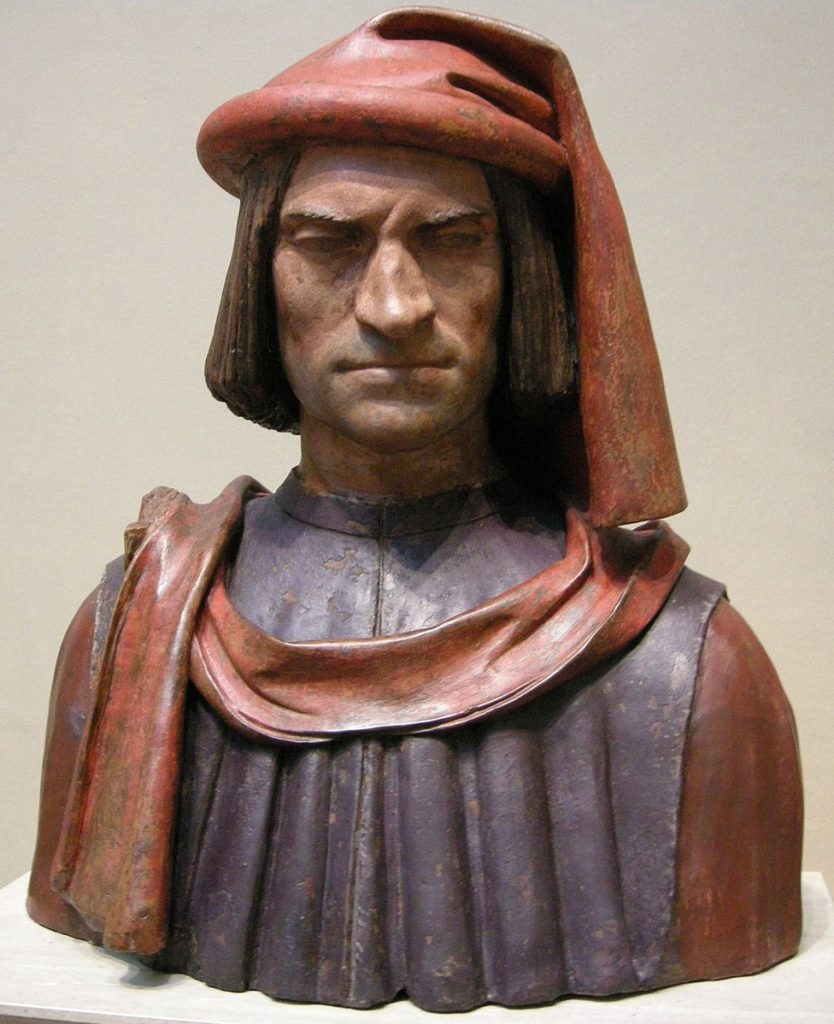
The Pazzi Conspiracy and the death of his brother Giuliano
His younger brother Giuliano was clever, cultured, popular and as skilled in business, diplomacy and politics as Lorenzo. Indeed, it’s said that he was even an even more fascinating personality.
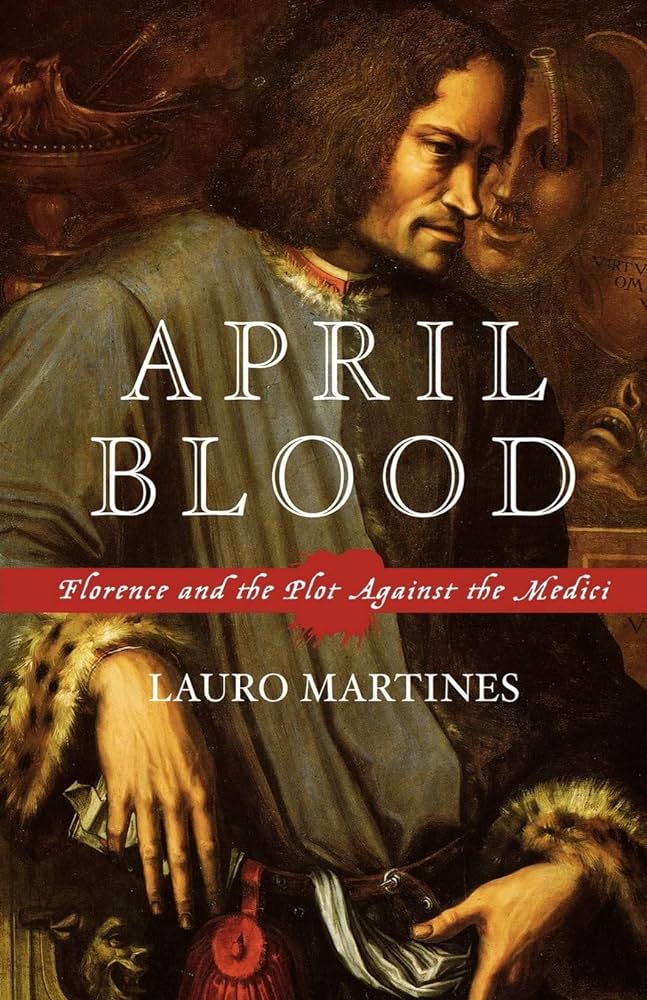
The Pazzi family was one of the oldest in Florence, with important noble titles, and was a rival of the Medici for years. Until the two families had made an alliance, sealed by marriage, and had therefore become relatives.
On Easter morning 1478, April 26th, the Pazzi family made an attempt on the lives of both Medici brothers, stabbing them in the back during Easter mass. Giuliano was brutally murdered, while Lorenzo was only wounded and saved thanks to the sacrifice of his friend Francesco Nori. It was an unprecedented event, not just two horrible murders committed in church, during the most sacred celebration. But a real family and political conspiracy, with the aim of carrying out a coup d’état and gaining power over Florence.
But the conspiracy failed, since Lorenzo survived. That bloodbath was the beginning of a popular revolt and the end of the Pazzi family. The Medici became even more powerful, supported by the Florentine people, disgusted by such a betrayal, and Lorenzo further asserted his influence in Europe.
- To learn more about that, take my Dark Florence historic true crime tour!
- Or take the Medici walking tour
Lorenzo and Michelangelo
Lorenzo discovered Michelangelo’s talent when the artist was only 12 years old, noticing him as he sculpted a small but extraordinary marble statue depicting a faun. They were in the Garden of Arts (no longer exists today), a garden decorated with ancient statues. Here Lorenzo used to invite artists to work and draw inspiration, which was located on the right side of Palazzo Medici.
That day, the young Michelangelo was offered the opportunity to be educated by the Medici family, and to be able to study Latin, history, philosophy, and much more. Thus Michelangelo spent 3 years in Palazzo Medici, together with Lorenzo’s other children.
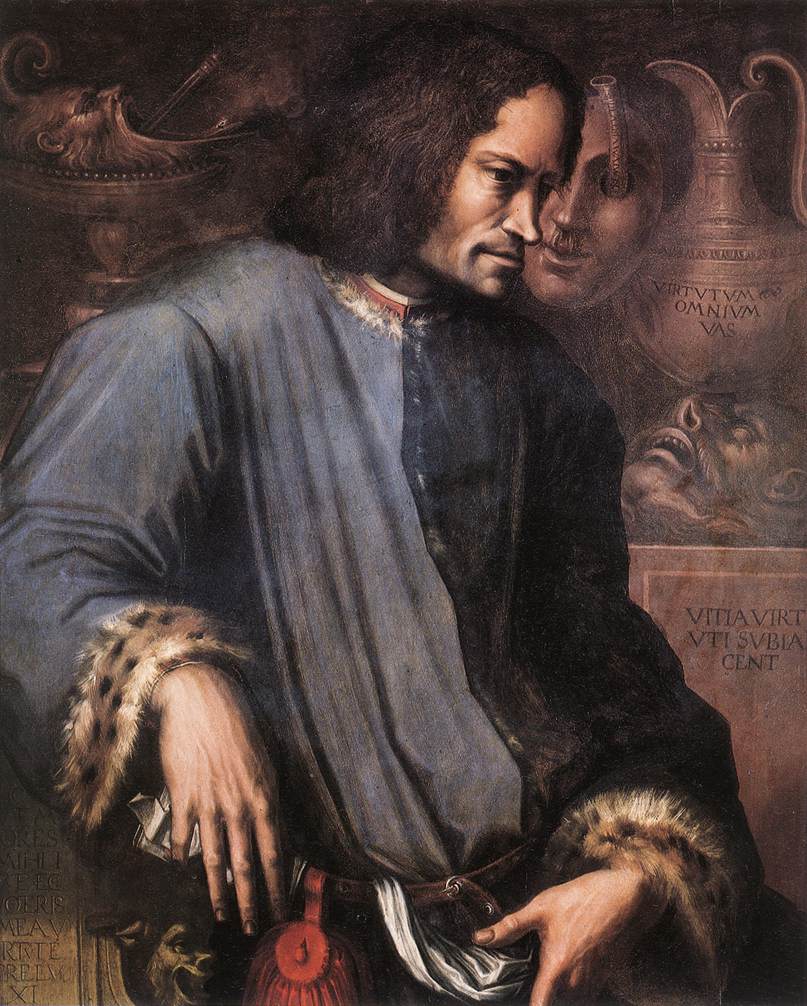
Lorenzo VS friar Savonarola
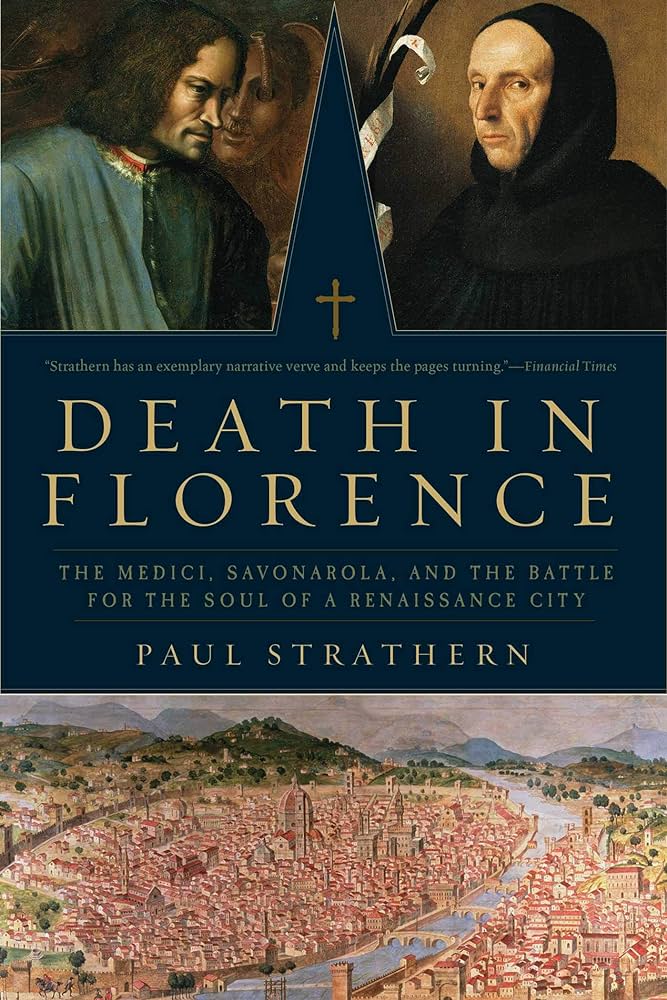
Lorenzo de’ Medici’s antagonist was Girolamo Savonarola, a very conservative Dominican friar, who saw the decadence of their times in Renaissance culture, personified by the Magnificent. Those paintings and sculptures, full of pagan gods, references to ancient Rome and naked bodies, represented the road to hell. Savonarola is known for the bonfires of the vanities, real bonfires that he held in Piazza della Signoria, where he and his followers publicly burned books, artworks, clothes and jewels, which led the Florentines towards sin.
After Lorenzo’s death, Savonarola became even more powerful and even went so far as to effectively govern the Republic of Florence, as a religious fanatic dictator. His government lasted only 4 years, but they were 4 years of nightmare for the city. He pointed the finger at Florentine bankers, merchants, and Renaissance artists. But also at the Pope, accused of corruption and profligacy. He ended up making way too many people angry, and ended very badly.
- To find out more about the rivalry between Lorenzo and Savonarola, read Death in Florence by Paul Strathern. It is a beautiful book of historical non-fiction, as exciting as a novel, which talks about these two historic characters.
Portraits of Lorenzo de’ Medici
There are several portraits of Lorenzo the Magnificent (often represented together with his brother Giuliano). The most beautiful and precious ones are those in the Magi Chapel, at Palazzo Medici Riccardi. The chapel was decorated in 1459 by Benozzo Gozzoli with wonderful frescoes in brilliant colours, gold and precious stones. It is thought that an teenager Lorenzo de’ Medici is also portrayed in the procession of the Magi, twice: a realistic portrait and an idealized one.
At the Uffizi Gallery there is a beautiful painting that Sandro Botticelli made in1475, the Adoration of the Magi. This painting portrays many members of the Medici family, including Lorenzo and his brother Giuliano, their grandfather Cosimo and their father Piero.
Another very famous portrait is exhibited in the Uffizi Gallery, and was painted by Giorgio Vasari in 1534. At the time Lorenzo had been dead for over 40 years, and Vasari had not even been born when the Magnificent died. So it’s a posthumous portrait. But Vasari wanted to remember such an important figure in the history of Florence with a painting that celebrated his personality.
The portrait of Lorenzo the Magnificent by Giorgio Vasari is located on the first floor of the Uffizi Gallery, in the room dedicated to the portraits of the Medici.
- Read also: what to see at the Uffizi Gallery
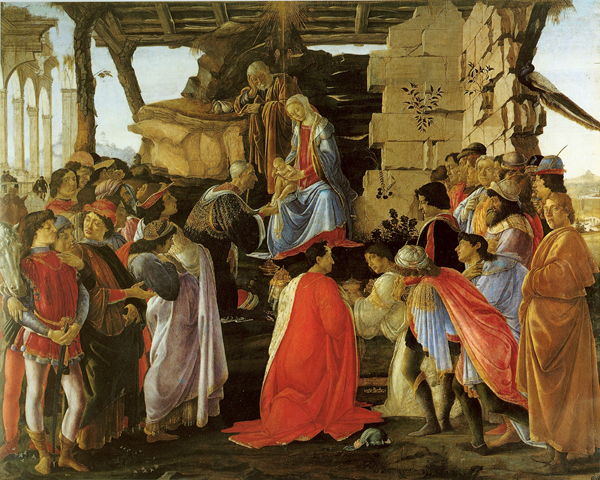
Fun Fact: his most famous poem
Did you know that Lorenzo was also a talented poet? Some of his poems were very philosophical, other ones are showing a great sense of humor, while other are true hymns to life. His most famous poem (translated into English):
Youth is sweet and well
But doth speed away!
Let who will be gay,
Tomorrow, none can tell.
I hope you found this biography of Lorenzo the Magnificent useful, and discovered some new, interesting facts about the Renaissance. Ciao, see you soon!